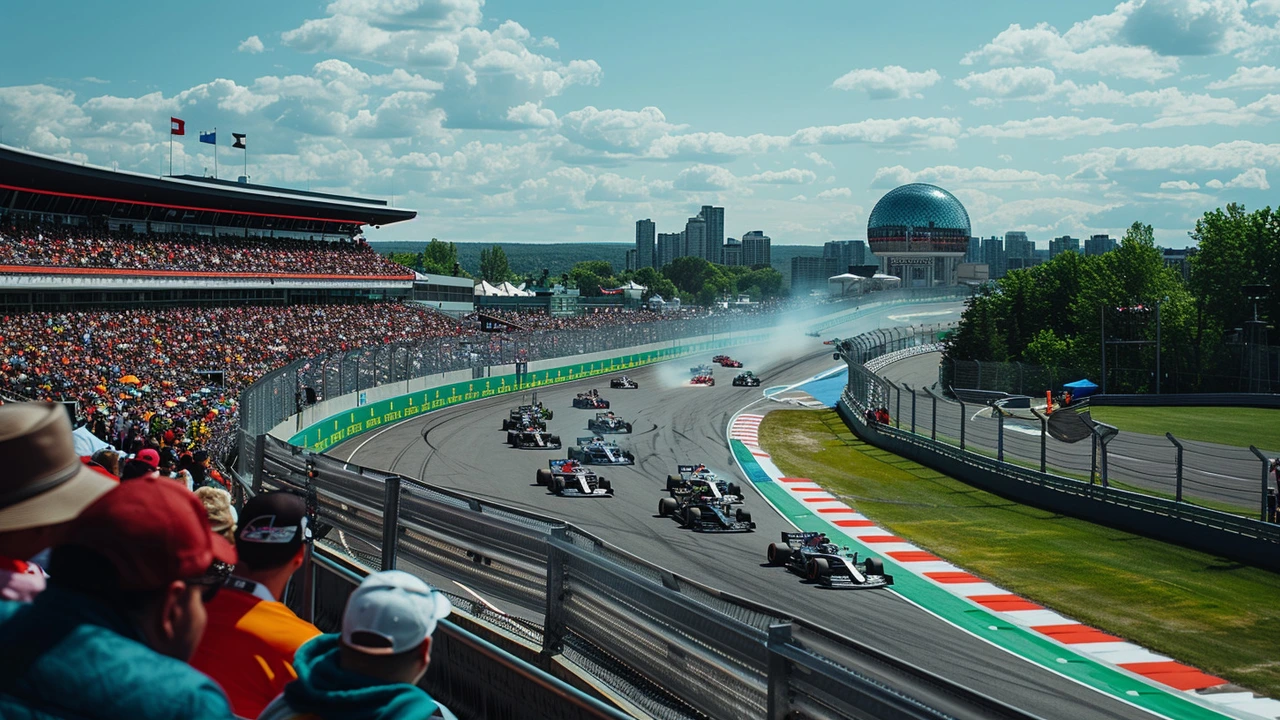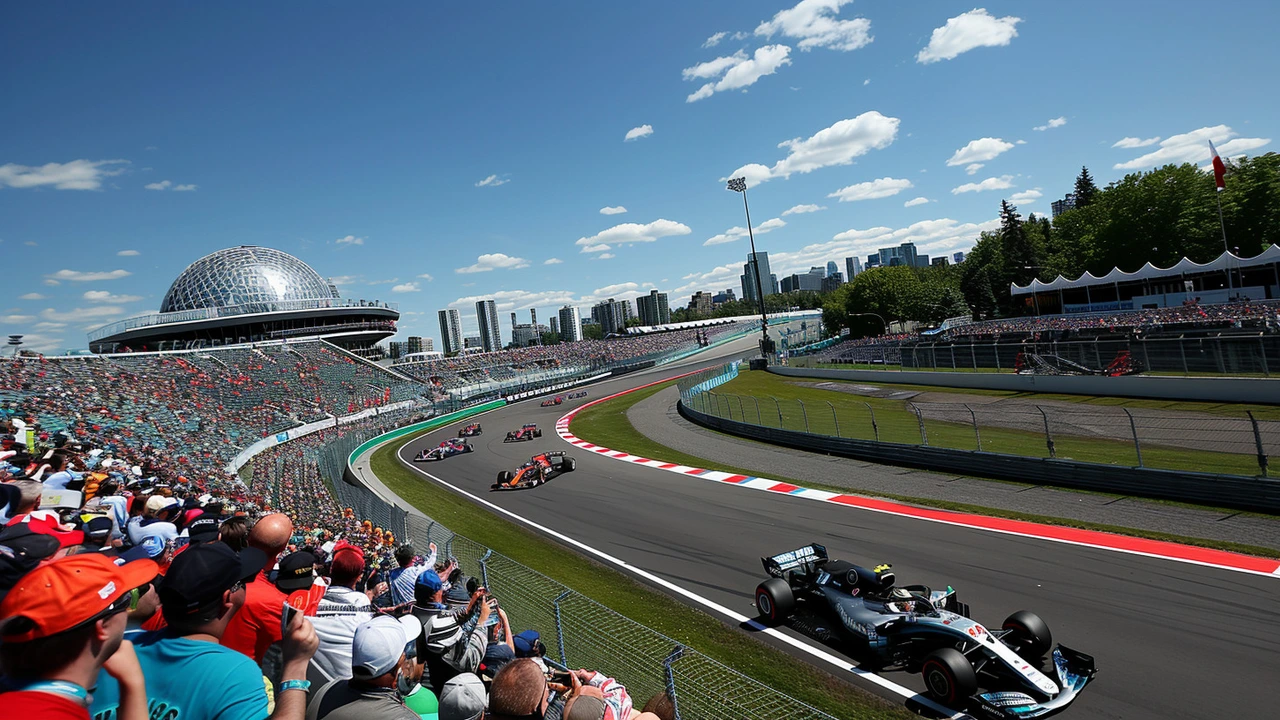Key Insights from F1 Canadian GP Friday Practice: Rain, Delays, and Surprises

Overview of Friday Practice at the Canadian GP
The Formula 1 Canadian Grand Prix’s Friday practice sessions turned into a rollercoaster of weather unpredictability and strategic insights. Heavy rain, coupled with sporadic hail and thunderstorm warnings, transformed the first day of practice into a dramatic showcase of adaptability and resilience.
The start of the day saw a 20-minute delay as teams and drivers navigated through massive puddles that had formed on the track. It set a precedent for the caution and meticulousness required for the rest of the sessions. The damp Canadian track gradually dried, forming a single dry line, making the practice sessions a mix of wet, intermediary, and dry conditions.
Lando Norris Leads First Session
Lando Norris of McLaren showcased his wet-weather prowess by clocking the fastest time in the first practice session with an impressive 1m24.435s. His skills in navigating the tricky wet conditions on the semi-dry line demonstrated not only his capacity to adapt but also his familiarity with the Canadian circuit.
As the session advanced, more drivers moved onto intermediate tyres, trying to find the right balance between grip and speed. The constantly changing conditions on the Circuit Gilles Villeneuve meant that no single run was identical, adding an element of surprise and excitement.
Fernando Alonso Tops Second Session
The second practice session saw Fernando Alonso, the seasoned campaigner in the sport, putting in a stellar performance. With a time of 1m15.810s, Alonso set the standard amidst a session continually interrupted by bursts of rainfall. His consistent laps underscored Aston Martin's strategic acumen, making the right calls at crucial times.
Alonso’s performance in these conditions was particularly noted given his reputation for thriving in adverse weather. His ability to extract maximum performance from the car, regardless of conditions, is well-acknowledged, and Friday’s practice was a testament to his exceptional wet-weather skills.
Max Verstappen's Troubles
Reigning world champion Max Verstappen had a notably challenging day, with his second practice session being cut short due to an ERS failure. The Red Bull driver completed only four laps, spending a significant amount of time in the garage. The technical glitch came at an especially inconvenient time as teams look to gather as much data as possible ahead of qualifying and the race.
This setback was a deviation from Red Bull’s usual reliability. However, the team and Verstappen are known for their resilience, and it will be interesting to see how they bounce back in the remaining sessions amidst further expected weather disruptions.
Weather Continues to Play Spoilsport
The spoiler in the storyline remains the weather. The forecast predicts continued rain and potential thunderstorms for the rest of the weekend. This sets the stage for a gripping qualifying session and race, where wet-weather specialists and teams with astute strategic analysts could find themselves in advantageous positions.
Teams like Aston Martin and Mercedes, with drivers known for their deft handling in wet conditions, might see a significant boost. Lance Stroll, for instance, with his vigorous steering wheel inputs, could particularly benefit. The weather could level the playing field significantly, making specific tyre choices and strategic decisions critical.
Strategic Calls and New Track Surface
The new track surface at Circuit Gilles Villeneuve adds another layer of complexity. A drying track can present a sliding challenge, demanding precise strategic calls on tyre selection. These decisions, often made in split seconds, could define the podium contenders. For strategists, this Grand Prix is likely to be a data-heavy affair, requiring a balance of real-time insights and historical data.
Amidst the constraints of unpredictable weather, tire management becomes pivotal. Teams need to meticulously analyze data from the interrupted practice sessions to prepare for qualifying and the race. The ever-changing track conditions necessitate not just quick reflexes and skills from the drivers, but also diligent and insightful decisions from the pit wall.

Preparing for the Unpredictable
As teams debrief and analyze the day's data, the focus unmistakably shifts to predictive strategies. Analytics will play an essential role, blending historical performances, weather model predictions, and on-ground data. The balance between risk and reward is delicate, especially when adverse weather looms large over the weekend's proceedings.
For fans and followers of Formula 1, the Canadian Grand Prix promises an unpredictable and thrilling weekend. As strategists work overtime and drivers prepare for the challenges ahead, the confluence of rain, new track dynamics, and high stakes sets up an action-packed race. Each lap, tire choice, and strategic call will be meticulously scrutinized, amplifying the excitement that only such unpredictable conditions can provide.
In concluding the first day of practice, it is clear that Friday served more than just as a warm-up. It has become a crucial element of a strategic jigsaw puzzle that every team is eager to solve. Inevitably, this Grand Prix weekend will test the mettle, adaptability, and tactical acumen of the teams and drivers in the highest order. And as always in Formula 1, it’s the unpredictable that carves the path to glory.